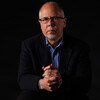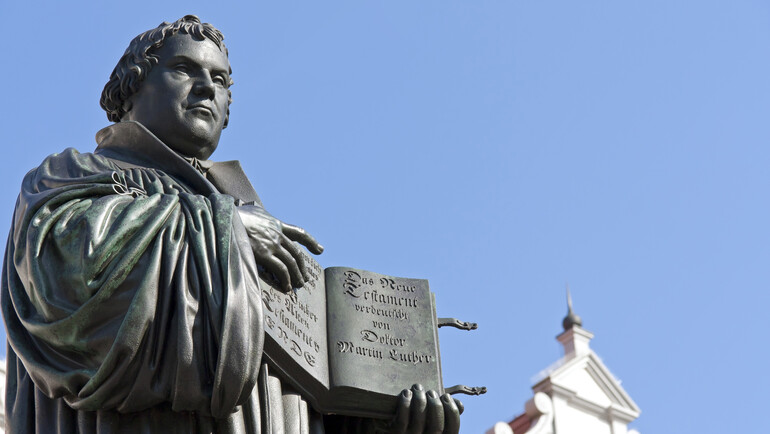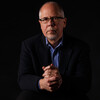EDITOR’S NOTE: Like all Gleaner Perspective articles, this is an individual opinion. It is not an officially voted stance or statement of the North Pacific Union Conference. The Gleaner editor welcomes other perspectives submitted here.
It seems somehow appropriate on this Reformation Day 2018 to reflect on the current stance of our Seventh-day Adventist Church toward the Protestant ethics of individual conscience in matters of belief and practice.
More specifically, we continue to ponder a question: How should Northwest members faithfully respond to the October 14 vote by the General Conference (GC) executive committee? During Annual Council, committee members voted 185 to 124 (with two others abstaining) in favor of the document “Regard for and Practice of GC Session and GC Executive Committee Actions.” This action pleases some who believe noncompliance is tantamount to rebellion, a slippery slope to unbridled congregationalism. It concerns others who believe just as strongly that the approved plan is a dangerous and counterproductive move toward centralized, hierarchical governance.
The approved document leaves most current processes in place at local church, conference, union and division levels. Part 1 of the document states: "… compliance shall initially be the responsibility entrusted to the administrative level of the Church closest to the matter. This organization is responsible for notifying the entity perceived as non-compliant. With sound judgment and prayerful discernment, administrators may use existing General Conference working policies and guidelines as tools for resolving matters of non-compliance.”
But it also creates new compliance functions at the GC level and puts an affirmative stamp on five new compliance committees set up by the GC Administrative Committee (GC ADCOM). Part 3 of the document states in part: “If, in the opinion of the executive officers of the conference and/or union and/or division and/or General Conference, compliance has been requested but has not been made evident or has not been sustainably achieved, the General Conference Administrative Committee may request the appropriate General Conference Compliance Review Committee to implement its terms of reference.” The conclusion includes several steps of collaboration between the GC and the local field in question, but ultimately leaves the final authority for dealing with persistent noncompliance in the hands of the GC administration. Hence the concerns among some that this raises a sort of Sword of Damocles over any entity below the GC level which finds itself morally or conscientiously out of compliance with a strict reading of policy.
The approved measures to be recommended initially to the GC ADCOM by these GC committees against persistently noncompliant entities includes a progressive plan: 1) a general warning; 2) public reprimand of the respective union conference president; and 3) removal of that union president from GC executive committee privileges for cause.
Few would disagree that some uniformity is necessary to promote efficiency in our church’s operations. During this year’s Annual Council discussion, most who expressed their opinions seemed to acknowledge that the church, to function appropriately, must have a measure of agreement on policies and processes. The differences come in how and where compliance should be tested and applied — locally at every level of democratic church governance, or from a hierarchical power shift to the top administration of the church. Our own church history reflects strong Protestant cautions over centralizing authority too far from the grassroots of the movement. Some within our fellowship have studied this historical context deeply. Others have not. Is it possible the growing edges of our church in other parts of the world lack a robust connection to our history and the cautionary lessons of the Reformation?
The reality is that no outcome, “yay” or “nay” on this document brought to the Annual Council, would have changed a stark and sobering truth: Our church, like our nation, is frankly divided over issues of authority and matters of morality and conscience.
Others have noted that the Annual Council vote revealed an almost identical 60:40 split as did the vote at the 2015 General Conference session on whether to allow worldwide divisions to make provision for the ordaining of women. It underscores persistent and deeply felt differences within our world church members. And, this cultural divide does not just represent a clash between authoritarian cultures around the world and the democratic mindset of Europe and North America. It is also embedded deeply within our Pacific Northwest conferences and churches. No amount of study documents, committees, speeches, quotations, ridicule or censure will change this. The finest, most carefully crafted words from representative leaders on differing sides before the Oct. 14 vote likely had little effect on the outcome. Our members and our representatives are well entrenched in what they believe about church authority and matters of morality and conscience. A majority of the members in your local church may approach these topics very differently than those in another Adventist church a few miles away.
With these differences, we have a choice: To listen, understand and accommodate reasonable variance, or to assist efforts to clamp down on them in ways that promote uniformity. In making this choice, we must understand that uniformity does not equal unity. Increased efforts at enforcing policy compliance may result in an outward appearance of homogeny, but will never effectively nurture unity in Christ’s body, the church. Rather, they most likely will produce an equal and opposite reaction.
“Our church has spoken. Move on,” say some within our ranks. That would be a logical step if our church was simply governed by majority rule. But the head of our church is not the General Conference or Pastor Ted Wilson, as earnest as he may be. Our leader is Jesus Christ, and we must find a way to honor the clear moving of His Spirit among us in ways that sometimes may contradict mere votes.
Does this share any common threads to what the early church grappled with in Jerusalem as the law and order crowd championed the old landmark of circumcision? Does it echo what Ellen White spoke to when Adventist Church leaders dragged their feet on the “new” theology of 1888. The apostles’ solution skirted tradition and acknowledged the Spirit’s unorthodox movement. Neither group was forced to live apart from conscience. The letter that went out from the Jerusalem Council acknowledged that what drew them together was greater than what had kept them apart. In a letter to the Gentiles of Antioch, Syria and Cilicia devoid of long lists of Scripture texts or Spirit of Prophecy quotations, they wrote simply: “It seemed good to the Holy Spirit, and to us, to lay upon you no greater burden than these necessary things.” And, as they lived and worked collaboratively on the gospel commission, the two factions — Jews and Gentiles, champions of law and preachers of grace — grew together as they grew closer to Christ.
Certainly not every issue rises to the level of a righteously moral cause. But it does seem ironic that a church that upholds the religious liberty of so many minorities seems ready by the 60:40 vote to disregard the conscientious stance of its own minority. For my own part, it feels damaging to our collective soul that women have been scapegoated as the catalyst for a compliance document only because they have responded to God’s call.
So, back to our original question: How should Northwest members respond to the Annual Council vote? Your reaction may be different from mine. The proper answer should come individually, in each of our hearts, after a pause to reflect on this singular point: Will our response move us toward or away from Christ and the unity He desires for His church? Not uniformity, unity. It matters if our Northwest mission of sharing a distinctive, Christ-centered, Seventh-day Adventist message of hope and wholeness is something alive and vibrant among us, or just a statement on a wall.
The next few weeks and months may provide additional clarity on an appropriate way forward. Church leaders throughout North America will be gathering for year-end meetings through Nov. 6, with this topic no doubt a significant point of discussion and prayer. North Pacific Union Conference leaders and executive committee members will meet in College Place, Wash., Nov. 13 and 14 for quarterly meetings. They will likely issue an official statement directly following that. Let your voice be heard, but let it also be in prayer.
Many of the young and young at heart among us are tired of the time and money spent on political maneuvering. They long for a church focused on Jesus’ mission, as do many of our world church leaders. They hope for a referendum on whether this thing we call church really works the way Jesus hoped it would.
So did Martin Luther. On an Oct. 31, 501 years ago, he nailed his 95 theses to the church door in Wittenberg, Germany. This seemingly small act has reverberated through centuries as the seedbed for the Protestant Reformation. In reflection, as we commemorate Reformation Day, let us ponder a reformation yet to come.
In the days ahead, each of us can put our faith to the test in becoming enthusiastically compliant with Christ’s call to mission. We can do that in many ways, including: 1) Recognizing Jesus as the leader of His own remnant and looking to Him to guide it through the wind and the waves; 2) Being active connectors in our communities, brightening the corners where we are with the light of Jesus’ love; and 3) Encouraging avenues for young men and women called by God and empowered by His Spirit to take active leadership roles for our church and His kingdom.
Jeff Wood, who recently passed away, penned the words to “Side by Side,” an iconic theme song for many Adventists. The stanzas invoke a needed spirit within us. How we will stand side by side and miraculously raise hands together in heaven when we struggle to do it today is difficult to imagine. Brothers and sisters, I hope we all will be there. But with so many of our unique differences, there is much yet we need to learn.










